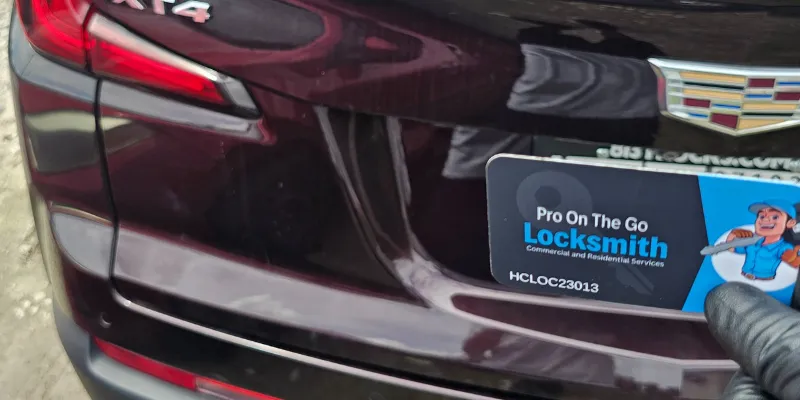
How to Test Your Door Lock for Failure Before It Happens
Don’t Wait for a Lockout to Find Out Your Lock Is Failing.
You turn the key.
Nothing happens.
You’re locked out of your own home—or worse, your business.
Here’s the truth: Most locks give warning signs before they fail. But homeowners don’t notice until it’s too late.
At Pro On The Go Locksmith™, we help Tampa residents stay one step ahead with this 5-minute lock failure test you can do right now.
The Lock Failure Test: Step-by-Step
1. Check for Loose Lock Hardware
Test: Grab the lock and try wiggling it in place.
If it feels loose, jiggles, or moves slightly, your lock’s internal screws or housing may be wearing out.
Pro Fix: Tighten the mounting screws with a screwdriver. If they spin freely, the threads may be stripped—time for a pro inspection.
2. Turn the Key or Thumbturn Slowly
Test: Insert your key and turn it slowly in both directions.
Feel for:
Catching
Grinding
Resistance
“Soft turns” where nothing engages
Pro Tip: Grinding often means internal pins are misaligned or dirty. Don’t lubricate it blindly—use dry graphite powder, never oil.
3. Close the Door and Try Again
Test: Lock and unlock your door while it’s closed.
Many locks fail only under pressure when the latch and strike plate are misaligned.
Signs of failure:
Lock works fine open, sticks closed
Requires pulling or lifting the handle to lock
Key must be jiggled while door is shut
Fix: Your strike plate might need realignment. A simple adjustment now can save you from a costly emergency later.
4. Test Your Deadbolt Depth
Test: Lock the deadbolt and look at how far it extends into the frame.
A healthy deadbolt:
Fully extends (at least 1 inch)
Snaps into the hole cleanly
Doesn’t get blocked by the frame
Fix: If it doesn’t fully extend, your doorframe may have shifted—often from Tampa humidity or settling.
5. Key Copies Not Working Smoothly?
Test: Use all your spare keys.
Copies made from other copies tend to degrade in accuracy. If one works but the others jam or feel sticky, it’s time to rekey.
Pro Fix: Rekeying or cutting a new key from the original key code brings everything back to precision.
Real Tampa Case: Avoiding a Lock Failure Before Vacation
A Tampa Heights client was leaving for a 10-day trip. She noticed her key was sticking “just a little.”
We did a free inspection. Her lock cylinder was one week from total failure.
- We rekeyed it
- Adjusted her strike plate
- Prevented a lockout that would’ve cost her $300 and her vacation schedule
Be like her. Not the guy who waits too long.
Bonus: When to Replace a Lock (Not Just Test It)
Your lock is over 7 years old
You hear internal clicking or “springy” noises
The door must be slammed to latch
You recently had a break-in or attempted break-in
It’s a cheap single-cylinder model (especially in older apartments)
Call us—we’ll inspect it for free.
FAQ
Q: Should I lubricate a sticky lock with WD-40?
A: No. Use dry graphite powder only. WD-40 attracts dust and causes buildup.
Q: What’s the #1 sign my lock is about to fail?
A: If it only sticks when the door is closed, it’s a sign your door has shifted—and failure is likely soon.
Q: Do you offer preventative lock checks in Tampa?
A: Yes! Pro On The Go offers free home lock evaluations in most Tampa neighborhoods. Just call us.
Want Your Locks Tested by a Pro?
Skip the guesswork. Book a certified technician to inspect your locks and give you a 3-minute diagnosis:
Call 813-534-2911 Now – Speak to a Tampa Tech
Book Online in 30 Seconds >
Tampa Area Map Embed
We serve: Downtown Tampa, Ybor City, Carrollwood, Westshore, and beyond.
Custom HTML/CSS/JAVASCRIPT
Final Thought
Your door lock protects everything behind it.
But locks don’t last forever—and they don’t always give loud warnings.
Catch the signs early. Test your lock before it fails.
And if you’re unsure, Pro On The Go Locksmith™ is always one call away.
